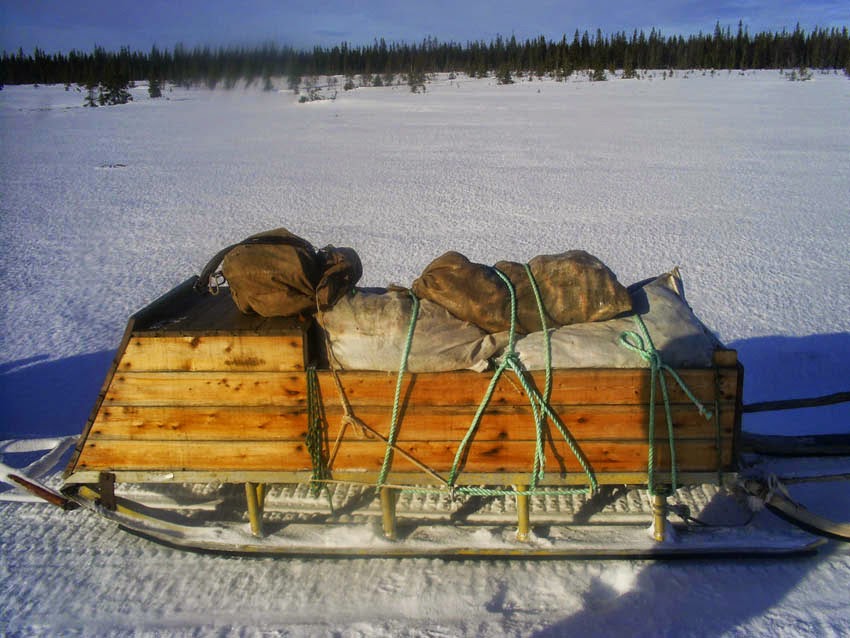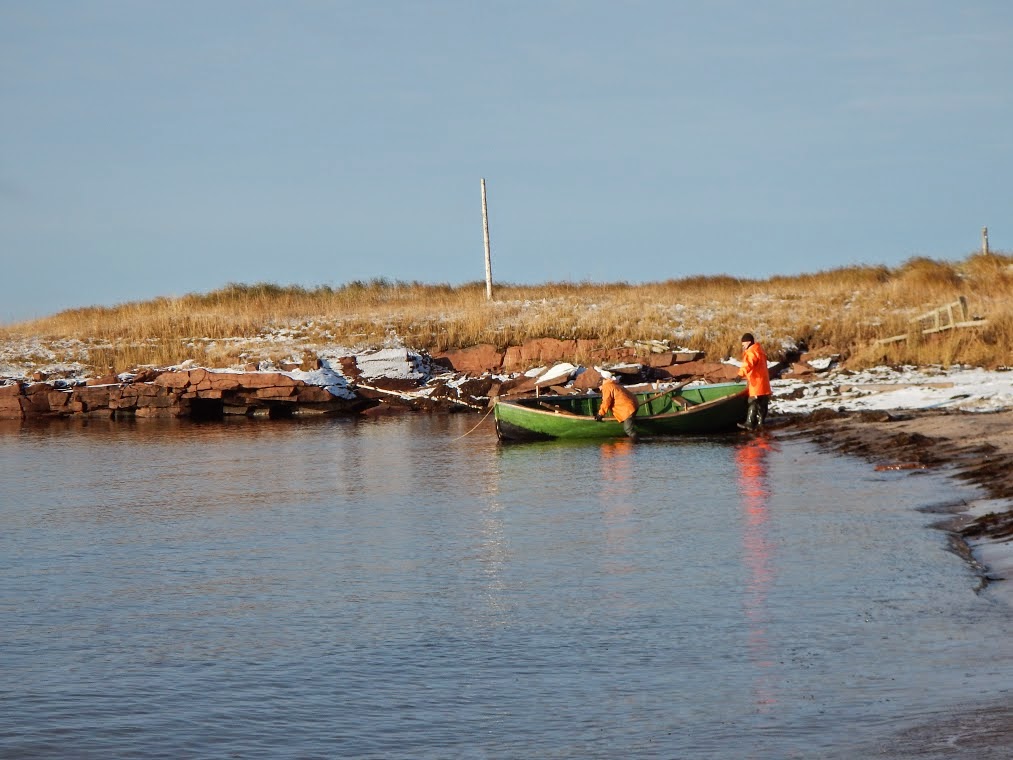Part 1
Salmon fishing season on rivers Chavanga, Strelna and Varzuga begins in May. This period is characterized by high water levels in rivers, cold water and big quantity of fish. With the increase of water temperature of 6-8 C salmon becomes active and reacts to artificial flies. Therefore, for many anglers last May - first June weeks are the best start to the season.
The problem is that spring comes every time another. Therefore, the situation on the river almost never repeated. Keep in mind that the simplest combination of temperature and water level is complicated because we have to take into account a host of other factors. One of the most important is the dynamics of these factors. For example, the high temperature of 18-20 degrees is not a threat to the activity of the fish. But if the temperature is increased in a few days, then it will lead to a significant decrease in activity.
This is the case in the spring, a sharp change in transparency, water level and temperature decreases fish activity. A very important factor is the state of the rivers in the winter. Especially dangerous are hard frost and freezing of the rivers. Drastically reduces the number of suitable sites for salmon. A considerable part of the fish may die under the ice.. The transition from winter to spring is often strongly influenced on spring fishing. The rapid melting of snow and ice leads to a very intense lifting and movement of water and ice. Traffic jams of ice, which is deprived of the salmon sites. Part of the fish is killed by stormy spring break.
For these reasons, the behavior of salmon in the new season may significantly differ from the picture that we remember from last year. The fish can be different in temperament, others positions in the river, and a completely different reaction to our flies. Therefore, our last year's technique, fly, which we had placed so much hope, work is not as good as last year. Every year we have to try to understand what has changed in the river, what factors were decisive for the behavior of salmon. Then we have a chance to choose the right tactics for fishing, identify promising places to find the best equipment and gear.
Part 2
Part 3.
High and cold water, season beginning, end of May – early June.
Location 1
Fishing at the very deep places , large depth, big volume of the water, the main stream,
under rapids holes , deep plum.
under rapids holes , deep plum.
Bottom fishing by fast sinking line and large heavy flies.
Flies - 2-inch copper tubes, Waddington and other heavy body, wing length up to 10-12cm.
Colors are mostly bright, contrast, in the wing of a combination of red, yellow, black with
bright elements on the body flies.
bright elements on the body flies.
Location 2
Slow, not a very deep pools, clamps along the river, small holes where salmon stays for rest.
Fishing near the bottom, sinking line and flies 0.75-1.5 inch brass tubes, Waddington
and other bodies are not very heavy, wing length up to 8 cm.
and other bodies are not very heavy, wing length up to 8 cm.
Bright enough, wing - combination of red, yellow, green, black.
The very beginning of the summer, the water is still high and cold, but becomes
brighter
and the level falls. First weeks of June.
brighter
and the level falls. First weeks of June.
Location 1
The same deep places , large depth, bottom fishing by fast sinking line at the main
stream,
under rapids holes , deep plum.
stream,
under rapids holes , deep plum.
Flies - 0.75-1.5 inch copper tubes, Waddington and other major carriers, wing length
up to 8 cm.
up to 8 cm.
Bright enough, wing - combination of red, yellow, green, blue, black with bright
elements
on the body flies.
elements
on the body flies.
Location 2
Slow, not a very deep pools, clamps along the river, small holes, fishing near the bottom,
sinking line.
sinking line.
Flies 0.75-1-inch brass tube, Waddington and others not the heavy carriers and single
hooks № 2-4, wing length up to 6 cm.
hooks № 2-4, wing length up to 6 cm.
The wing is dark, but with bright elements, too bright elements on the body flies.
Summer takes effect, light and water drops, warm up to 10-12 degrees.
Location 1
Deep places near the main stream, large depth, under rapids holes , deep plum,
means bottom fishing by fast sinking line.
means bottom fishing by fast sinking line.
Flies 0.5-1-inch brass tube, Waddington and others carriers, double and single
hooks № 2-4-6, wing length 5 cm.
hooks № 2-4-6, wing length 5 cm.
The wing is mostly dark and bright elements on the body flies.
Location 2
In a slow, not deep water we use undersurface fly on a intermediate line.
Flies 0.5-0.75 inch brass or aluminum tubes and other light carriers, single and double
hooks № 4-6, wing length and 5 cm .Wing dark, bright elements on the body flies.
hooks № 4-6, wing length and 5 cm .Wing dark, bright elements on the body flies.
Part 4.
Finally, we have the opportunity to introduce you to the new salmon fishing season on
the south coast of the Kola Peninsula. Season this year we started from May 15.
This is the usual time for the opening of the season. Set of salmon that entered the
river in the fall, going on reaches and wait out the winter. Last week of May and
beginning of June, considered to be one of the best periods for catching salmon.
By autumn fish joins salmon that come into the river immediately after the ice melted.
Winter fish differs from the presence of spring lilac shade on the skin of the back and
a few more lean body. Often you can see small wounds and lesions on the skin of salmon,
which had to stand in the river all winter. Interestingly, in May on the fly caught salmon
are not the biggest. Welterweight winter fish is 2.5 - 3.5 kg. Although the fall in river
salmon come in 8 kg weight. Apparently, large salmon quickly lose their
aggressiveness in freshwater rivers. This can be seen in August, when the activity
of the fish increases and large salmon are back on the hook. Salmon that come into the
river after an ice drift in May differ decent size and reach 3-4 kg. Of particular interest
is catching large males, which appear in the river in early June. They reach 5-5.5 kg weight
and 78-82 centimeters in length.
Change in water level and temperature significantly affect the behavior of salmon.
Increased transparency of the water increases the activity of fish. Lowering the water
level and
temperature rise leads to passivity autumn fish, but increases the activity of marine
salmon that increase
their numbers in the river.
In general, spring salmon fishing is characterized by the following positive features:
1. A large number of autumn fish that wintered in the river
2. High activity of the fish in cold water
3. Presence of a large fall fish in the river
4. Appearance of the active fresh fish
5. Appearance of the large and active fresh fish in the river
To the negative points are:
1. Unpredictable water levels
2. Reduction comfortable fishing seats due to the high water level.
3. Rapid change of water temperature and the activity of salmon
Therefore, in each period on the river, we have to adapt to a mixture of salmon that
entered the river at different times, have different activity, occupy different places
and require different techniques of fishing.
fiske lax, fang von lachs in Russland, kola salmon fishing, peche au saumon Russie,
pesca peninsola di Kola, salmon fishing in Russia,
pesca peninsola di Kola, salmon fishing in Russia,

.jpg)







.jpg)





















.jpg)
















































.jpg)














































